A logo is much more than just an image; it is literally a brand’s face. This, in turn, is in a world full of numerous products and services fighting for attention from each other, so making a compelling logo makes all the difference between being just another entity standing out or blending into oblivion. This exploration covers the realm of logo design through ten iconic examples from industry leaders. Deconstructing these visual masterpieces will lay bare the keys to a logo’s timeless influence and fan the creative flames for design work yet to come.
But what, then, really makes for an iconic logo? Is it the simplicity of the design or the memorability of its image, or perhaps the abstractness of the concept? The answer lies in finding a balance in mixing these elements. These ten logo designs from industry giants represent the best in reducing a brand’s personality into one striking visual mark. By deconstructing the details behind these logos, we will learn what design principles have made these brands world-renowned and maybe even generate some new insights into logo design.
Let’s explore 10 iconic logos that exemplify these principles:
Nike: The Swoosh
Designed: 1971
Designer: Carolyn Davidson
Years in use: 1971–present
The Nike swoosh exemplifies truly great minimalist design. Within its simplicity of arching shape, it is recognisable across the globe and speaks of speed, movement, and athleticism. This mark has become synonymous with performance commitment and innovation for the brand.
Apple: The Bitten Apple
Designed: 1977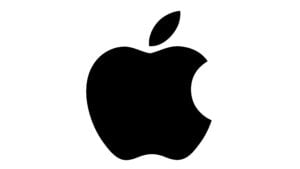
Designer: Rob Janoff
Years in use: 1977–present (with various redesigns)
It’s a perfect blend of simplicity and intrigue, an apple with a missing bite, which in essence represents knowledge and curiosity. Apple’s logo communicates the philosophy of user-friendly technology. Now, as the years have evolved, so has the design of this iconic brand. It retains the very core essence of innovation and creativity.
Woolmark: The Intricate Swirl
Designed: 1964
Designer: Francesco Saroglia
Years in use: 1964–present
The Woolmark is synonymous with authenticity and class in the textile industry. The swirl shows the intricate natural fibres of wool, while the design, in its elegance, speaks of heritage and craft. For decades, the Woolmark has been a mark of quality one can rely on.
Starbucks: The Mermaid
Designed: 1971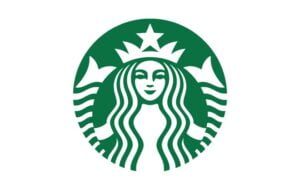
Designer: Terry Heckler
Years in use: 1971–present (with various redesigns)
The Starbucks mermaid logo is a captivating icon that epitomises the experience of a coffeehouse. The mythic siren symbolises the allure of coffee, and the twin tails signify that the company focused on both coffee and tea.
Coca-Cola: The Classic Script
Designed: 1887 (refined version of the original 1886 design)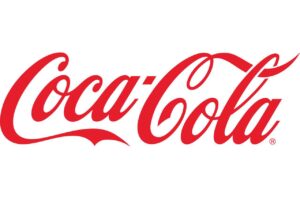
Designer: Frank Mason Robinson
Years in use: 1887–present
This Coca-Cola script is a true classic in typography, hardly having undergone any significant changes throughout its lifetime. Elegant in curve and distinctive in style, the Coca-Cola logo has become etched in popular culture as happiness, refreshment, and American optimism.
McDonald’s: The Golden Arches
Designed: 1961
Designer: Jim Schindler
Years in use: 1961–present
Probably one of the most recognisable symbols in the world, these golden arches connote fast food, convenience, and nostalgia from childhood. The inverted V shape suggests the shape of an open door, welcoming each customer to the brand McDonald’s.
FedEx: The Subtle Arrow
Designed: 1994
Designer: Lindon Leader
Years in use: 1994–present
The FedEx logo is a masterclass of hidden design elements: within the negative space between the letters “E” and “X” is an arrow, subtly signifying speed, precision, and delivery. This ingenious abstraction makes the logo more memorable and resonates with the basic message of the brand.
Ferrari: The Prancing Horse
Designed: 1929 (first used by Enzo Ferrari in 1932)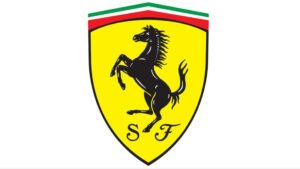
Designer: Based on the emblem of Count Francesco Baracca
Years in use: 1932–present
A black prancing horse against a yellow background is a strong indicator of the Ferrari brand, which conveys speed, power, and luxury. “Cavallino Rampant,” the horse, has quite a history associated with the Italian air force, thereby adding a touch of heritage and mystique to this brand.
UPS: The Understated Bow
Designed: 1961 (original design by Paul Rand)
Designer: Paul Rand (1961); FutureBrand (current design)
Years in use: 1961–present (with redesigns in 2003 and 2014)
The brown UPS logo, with its simple shield and the company’s initials in an understated bow, speaks to reliability, efficiency, and trust. The bow suggests tying things together, translating to getting packages delivered safe and sound.
Lego: The Playful Bubble Letters
Designed: 1973 (current version)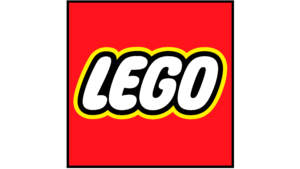
Designer: Lego Group in-house design team
Years in use: 1973–present
These playful bubble letters have captured the Lego brand very well. Each of them is so full of fun and colour that they evoke excited feelings of wonder and creativity, part of childhood. Thus, it reflects their commitment to creative play and construction experiences as embodied by the company.
How to make an Iconic Logo?
It’s the visual cornerstone of a brand, capable of evoking emotions, building trust, and leaving a lasting impression. The best logos share several key characteristics: simplicity, memorability, and abstraction.
- The Power of “Simplicity”
Contrary to popular belief, creating a simple logo is often the most challenging part of the design process. It requires distilling a brand’s essence into a minimal, yet impactful visual. While some logos incorporate intricate details, the most iconic ones are fundamentally straightforward. Consider Coca-Cola, whose elaborate script belies the simplicity of its concept: just the brand name in elegant typography.
Many renowned logos rely solely on text for their power. From the playful curves of Lego to the clean lines of IBM, these word marks demonstrate that typography alone can create a strong and memorable identity.
- The Art of “Memorability”
A logo’s ability to stick in people’s minds is crucial for brand recognition. The most effective logos often have a single, dominant visual element that is instantly recognisable. Whether it’s the Nike swoosh, the McDonald’s golden arches, or the Starbucks mermaid, these iconic symbols have become synonymous with their respective brands.
It’s essential to avoid creating logos that are too complex or abstract, as this can hinder memorability. The ideal logo strikes a balance between simplicity and distinctiveness.
- The Importance of “Abstraction”
While it might seem counterintuitive, a logo doesn’t always need to be a literal representation of a brand. In fact, a certain level of abstraction can often be more effective. Apple’s logo is a prime example: a simple, stylised apple with a bite taken out of it. This iconic symbol has little to do with computers, but it’s instantly recognisable and has become synonymous with innovation and design.
Other classic logos, such as the FedEx arrow or the Woolmark swirl, rely on abstract elements to create visual interest and memorability.
The Test of Time
The true measure of a great logo is its ability to endure. Logos that have stood the test of time, weathering economic storms and cultural shifts, are those that have mastered the principles of simplicity, memorability, and abstraction.
Ready to Create Your Own Iconic Logo?
We specialise in logo design and branding that captures the essence of your business.
Let’s craft a logo that stands the test of time >
Summary
Logos are almost like business cards in that they are the very first point of contact a brand share with its audience. It’s effectively visual shorthand for the complex ideas, emotions, and values a brand possesses. In other words, it’s something of a silent ambassador—that means communicating identity, personality, and promise, all without a word. This exploration delves into the realm of logo design by way of looking at ten iconic examples that go beyond being visual representations to becoming part of culture.
Essentially, a truly great logo is much more than a merely visual representation—it is a strategic asset with the ability to drive brand perception, consumer behaviour, and sustainability.
Each of the logos analysed in this research serves as a case example to identify the founding principles of design behind successful brand building. It is in grasping these three characteristics—simplicity, memorability, and abstraction—that designers will be able to fashion logos that hook awareness and are retentive.



